
Monte Sano Mountain is a mountain located in Huntsville, Alabama. The name Monte Sano is Spanish for "Mountain of health". This name comes from the fact that curative health resorts used to be located on the mountain to take advantage of the fresh air, clean water, and cooler temperatures.

Monte Sano State Park is a publicly owned recreation area and mountaintop retreat encompassing 2,140 acres (870 ha) on the eastern portion of the top and slopes of Monte Sano Mountain on the east side of Huntsville, Alabama. The state park has 1930s-era, Civilian Conservation Corps–built rustic cottages, hiking trails and picnic areas with scenic overlooks, and modern campsites. It is managed by the Alabama Department of Conservation and Natural Resources.

Barstow Harvey House, also known as Harvey House Railroad Depot and Barstow station, is a historic building in Barstow, California. Originally built in 1911 as Casa del Desierto, a Harvey House hotel and Santa Fe Railroad depot, it currently serves as an Amtrak station and government building housing city offices, the Barstow Chamber of Commerce and Visitor Center, and two museums.

Bryce Canyon Lodge is a lodging facility in Bryce Canyon National Park, Utah, United States, built between 1924 and 1925 using local materials. Designed by architect Gilbert Stanley Underwood, the lodge is an excellent example of National Park Service rustic design, and the only remaining completely original structure that Underwood designed for Bryce Canyon National Park, Zion National Park, and the North Rim of the Grand Canyon.

The Cushing Hotel is a historic hotel in Afton, Minnesota, United States, established in 1867 to cater to railroad workers, lumbermen, and travelers. The hotel was listed on the National Register of Historic Places in 1985 for having local significance in the theme of commerce. It was nominated for exemplifying the commercial lodging common to mid-19th-century river towns. It remains in business as the Afton House Inn.
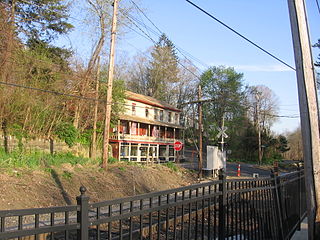
The Branchville Railroad Tenement is a historic commercial and residential building at the junction of Portland Avenue and West Branchville Road in Ridgefield, Connecticut. Built in stages between about 1853 and 1905, it is a distinctive reminder of the area's railroad-related history, serving as tenement housing for railroad workers before being converted to other residential and commercial uses. The building was listed on the National Register of Historic Places on August 12, 1982. It continues to be used for commercial and residential purposes.

The Johns Hotel (20IR64) is a complex of buildings, of which but two remain, located near Washington Harbor, on Barnum Island, Isle Royale National Park, Michigan. It was listed on the National Register of Historic Places in 1997.
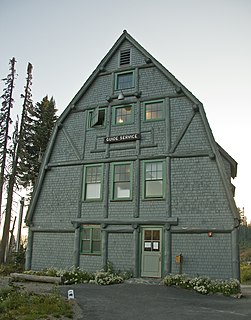
The Paradise Historic District comprises the historic portion of Paradise developed area of Mount Rainier National Park. The subalpine district surrounds its primary structure, the Paradise Inn, a rustic-style hotel built in 1917 to accommodate visitors to the park. The Paradise Inn is a National Historic Landmark. Five other buildings are included in the district. The district was placed on the National Register of Historic Places on March 13, 1991. It is part of the Mount Rainier National Historic Landmark District, which encompasses the entire park and which recognizes the park's inventory of Park Service-designed rustic architecture.
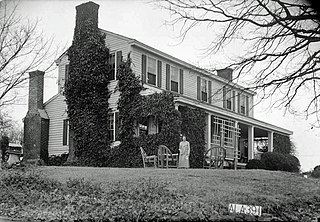
The James Greer Bankhead House, also known simply as the Greer Bankhead House and Forest Home, is a historic house in Sulligent, Alabama. It was added to the National Register of Historic Places on February 13, 1975. It is the only site listed on the National Register in Lamar County.

The Robbins Hotel was a historic hotel building in Beatrice, Alabama. The nucleus of the building started out as a private, one-story home with six rooms, built circa 1840. A second floor was added sometime later. The house was converted to a hotel between 1906 and 1910.

The Arizona Rancho, also known as the Higgins House, Brunswick Hotel and Arizona Hotel, is a former hotel in Holbrook, Arizona. It was originally built between 1881 and 1883 as a residence, the expanded as a boarding house, a hotel, and finally as a motel. The original structure is thought to be the oldest extant structure in Holbrook.

The Starr Hotel is a historic hotel building located at 1913-1923 Western Avenue in Mattoon, Illinois. Businessman George M. Custer built the hotel in 1888. The hotel primarily housed workers on Mattoon's three railroads: the Illinois Central, the Cleveland, Cincinnati, Chicago and St. Louis, and the Peoria, Decatur and Evansville. Mattoon's economy was primarily based on railroad traffic; the city expanded greatly after the Illinois Central and Big Four opened in the 1850s, its railroad yards employed hundreds of workers, and multiple industries grew in Mattoon due to its railroad access. While the hotel mainly housed railroad workers, it also catered to other working-class groups, such as seasonal broom corn workers and hobos. The hotel became a boarding house in the 1920s, and its upper floors closed entirely in the 1960s; its first floor is still a commercial property. The building is one of two surviving working-class hotels in Mattoon.

The Avondale Mill Historic District is a former mill village in Pell City, Alabama. Part of the Avondale Mills, the area is architecturally significant for the first sawtooth roofed mill in Alabama, and the mill village represents a relatively intact example of an early 20th century company town. The mill and its village were listed on the National Register of Historic Places in 2000. The mill closed in 2006, and burned in 2008 while being dismantled for scrap.
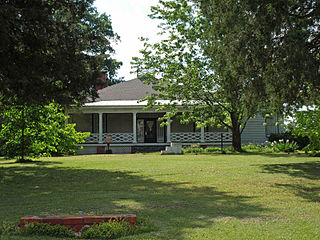
The James H. Bibb House is a historic residence in Madison, Alabama. Bibb was an early landholder in Madison, one of the main proponents of its incorporation in 1869, and distant relative of Alabama's first two governors, William Wyatt Bibb and Thomas Bibb. In 1866, Bibb purchased 300 acres west of the Memphis and Charleston Railroad depot, farming corn and cotton himself on half of it and renting out the other half. He also owned a mercantile business and a steam-powered grist mill in the small town.
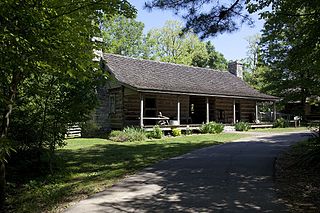
Burritt on the Mountain is an open-air museum in Huntsville, Alabama. The museum grounds on Round Top Mountain, a plateau connected to Monte Sano Mountain, were the estate of local physician William Burritt, who willed his house and land to the city for use as a museum upon his death in 1955. A number of 19th-century rural structures have been added to Burritt's mansion, both in the interest of historical preservation and life re-enactment.

The Withers-Chapman House is a historic residence in Huntsville, Alabama. The house was built by Allen Christian circa 1835 as the center of a farm that would become one of the major dairy suppliers in central North Alabama. After Christian's death in 1849, the house was purchased by Augustine and Mary Withers. Former Governor of Alabama Reuben Chapman acquired the house in 1873, after his previous house nearby had been burned by departing Union soldiers in 1865. The house remained in Chapman's family from 1873 until 1971. The surrounding farmland has been sold off into suburban development, but the house retains a prominent position on a 2-acre lot on a hillside.
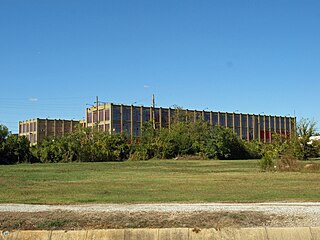
The Lincoln Mill and Mill Village Historic District is a historic district in Huntsville, Alabama. Opened in 1900, it quickly grew to be Huntsville's largest cotton mill in the first quarter of the 20th century. After closing in 1955, the mills were converted to office space that was used by the U.S. space program. Two of the older production buildings burned in 1980, but one main building and numerous houses built for workers remain. The district was listed on the National Register of Historic Places in 2010.

The Merrimack Mill Village Historic District is a historic district in Huntsville, Alabama. The cotton mill was built in 1900 by the Merrimack Manufacturing Company, reaching a peak of 1,600 employees by 1955. The mill was sold in 1946, and became known as the Huntsville Manufacturing Company. It operated until 1989 and was torn down in 1992. Houses in the adjoining mill village were built between 1900 and 1937, and encompass many mill house styles not commonly seen outside New England. The district was listed on the National Register of Historic Places in 2010.
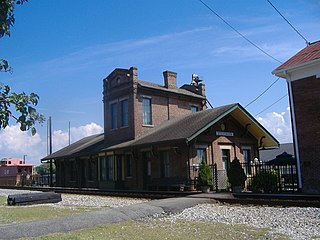
The Stevenson Railroad Depot and Hotel are a historic train station and hotel in Stevenson, Alabama. They were built circa 1872 as a joint project of the Memphis and Charleston Railroad and the Nashville and Chattanooga Railroad, whose lines converged in Stevenson. When the Memphis & Charleston was purchased by the Southern Railway in 1898, the Louisville and Nashville Railroad took sole control of the depot and operated it until 1976. It was converted into a history museum in 1982. Both buildings are brick with gable roofs and Italianate details. The depot has a central, second-story tower that was added in 1887. The three-story hotel had a lobby, dining room, and kitchen on the first floor and eight large guest rooms on the upper floors. The buildings were listed on the Alabama Register of Landmarks and Heritage in 1975 and the National Register of Historic Places in 1976.

The Wiregrass Museum of Art is an art museum in Dothan, Alabama. The museum was founded in 1988 and is located in the city's former power and water plant. The building was listed on the Alabama Register of Landmarks and Heritage in 1990 and the National Register of Historic Places in 1991.

























